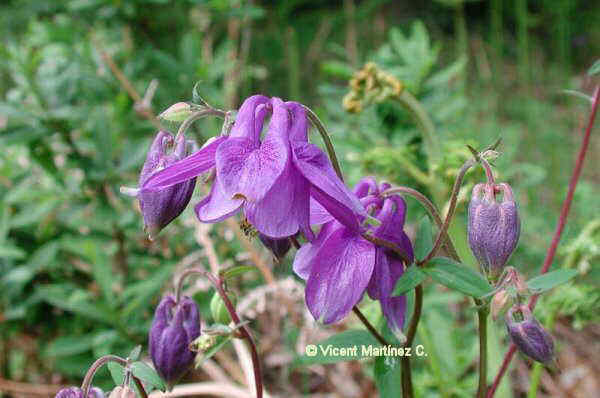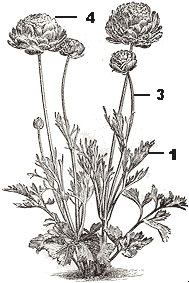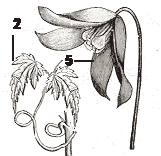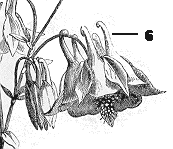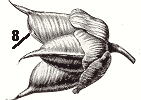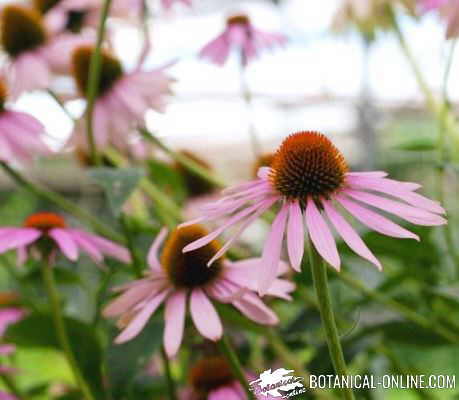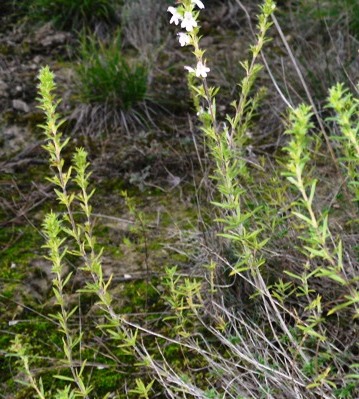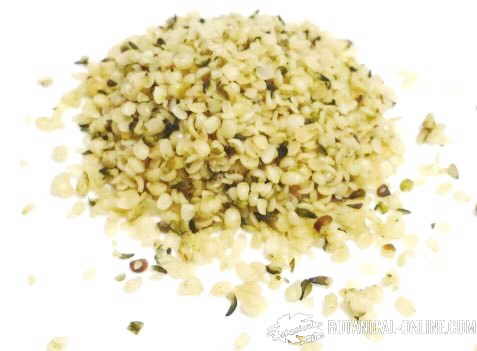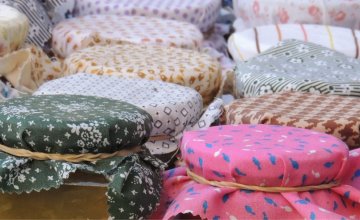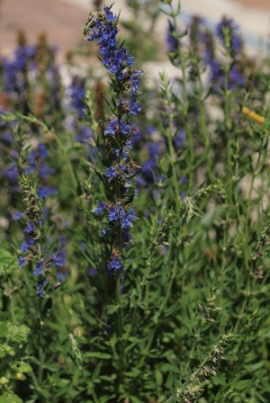Characteristics of buttercup family plants
Photo of Aquilegia vulgaris L.
The Buttercup family – ranunculaceae – comprises about 2000 species of plants mainly spread in temperate countries.
Most of them are herbs and lianas having big flowers, so they are very valuable in gardening.
They are also very well known because many of them are poisonous plants.
Ranunculus asiaticus
| |
| Leaves (1): Generally alternate and divided; some genera such as clematis are opposite.(2) Stems (3): In most of the cases they are herbaceous. In clematis, ligneous. Flowers: (4) Very changing.. | |
| Calyx: 5 sepals- clematis has four (5). Sometimes sepals are colored, reminding petals. Some genera – hepatica, for example– have bracts under the sepals very similar to a calyx. | Clematis alpina
|
| Corolla: 5 petals. Under them some species have nectar glands which in cases as aquilegia (6) o Delphinium (7) extend themselves behind the petals like horns. | Aquilegia vulgaris
|
| Stamens: Numerous. Ovary: Superior. Carpels: Numerous. | Delphinium nudicale
|
| Fruit: Follicles (8) and achenes. | Helleborus foetidus
|
Genera
The most important ones are the following:
| ACTAEA ADONIS CALLIANTHEMUM CALTHA CERATOCEPHALUS CONSOLIDA DELPHINIUM GARIDELLA | HELLEBORUS HEPATICA ISOPYRUM MYOSORUS PULSATILLA RANUNCULUS THALICTRUM |
![]() More information on plants
More information on plants

